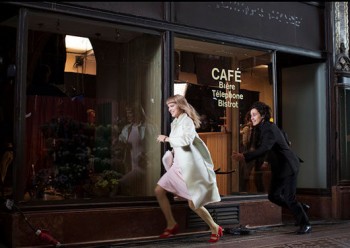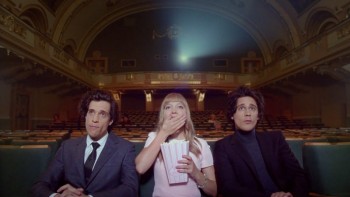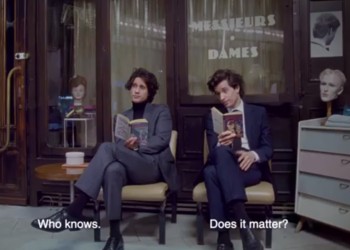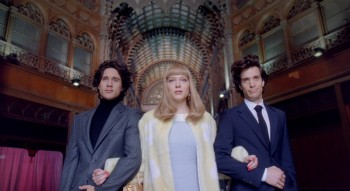[vimeo width=”500″ height=”375″]https://vimeo.com/62693726[/vimeo]
.
In Roman Coppola and Wes Anderson’s flirtatious threesome of short films Candy, a young woman named Candy (played by Blue is the Warmest Colour’s Lea Seydoux) finds herself the love interest of two best friends, Julius and Gene. The two filmmakers filmed the trio of films for fashion house Prada’s perfume, Candy.
The homage to Francois Truffaut’s Jules et Jim is obvious, Seydoux even resembling a young Jeanne Moreau. Here the tone and style is more playful, absurd even, inescapable overtones of a Wes Anderson film (for a more length exploration of Anderson’s style see this Numéro Cinq introduction to his short film “Hotel Chevalier”). Where Moreau’s Catherine at times in Jules et Jim seems more antagonist than protagonist – her tempest storms and desires things the two men seem to weather together – in this short film Candy has Catherine’s dynamism, but seems more insistently a traditional protagonist.
In the first film (above) she treats the men to a film and is keeper of the popcorn, reserving a healthy mouthful for herself.
[vimeo width=”500″ height=”375″]https://vimeo.com/62778850[/vimeo]
In the second, she refuses their competition, takes the cake, and has them all dance.
[vimeo width=”500″ height=”375″]https://vimeo.com/62936525[/vimeo]
And in the third, perhaps most key, we see that she is the only character who struggles here, as she explains the two men’s limitations to the women in the salon.
Certainly it’s not much of a struggle, and why be conflicted when you can just choose both, she eventually shows us. The last frame strongly emphasizes this. She is again centre frame. She has taken the all-of-the-above option.
The films are brief, there is no significant story development except the three flirting, and what conflict there is is fluffy as candy floss. The films are meant to tease more than please, though by the end it seems impossible not to want Candy too.
— R. W. Gray
.
.



